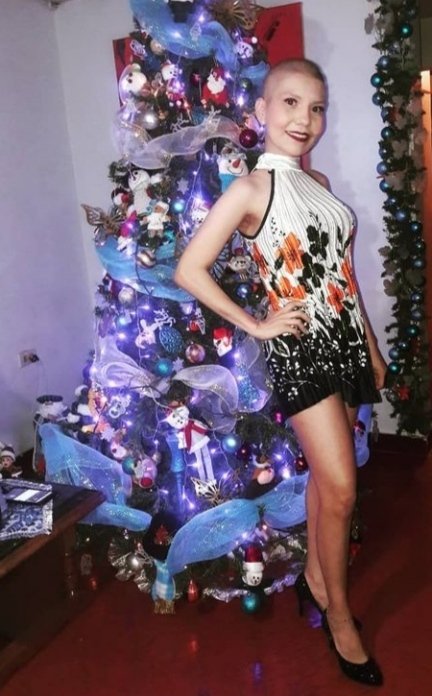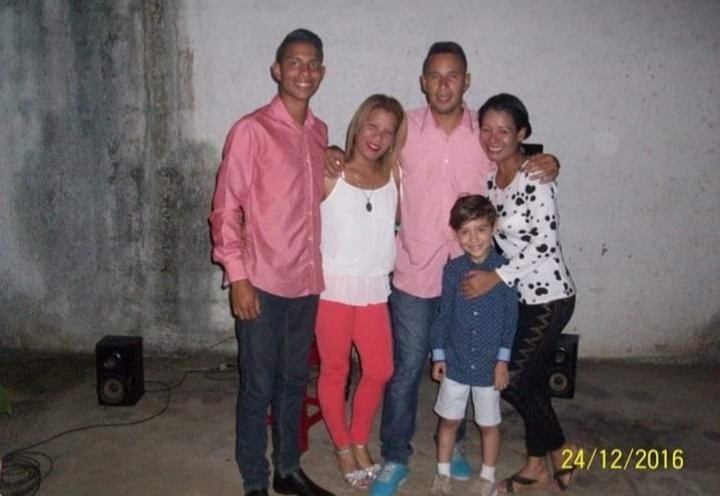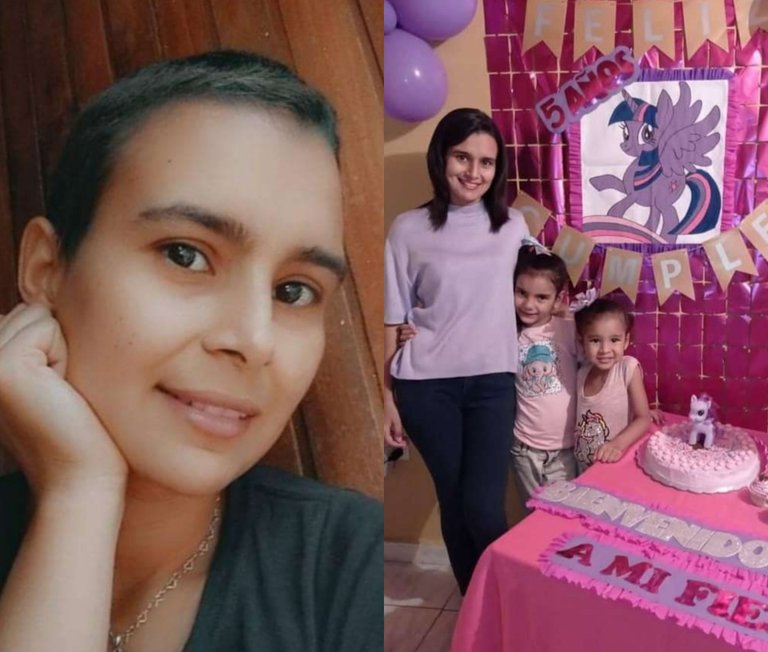Dos formas de ver: El Cáncer//Two ways of seeing: Cancer.
Hola amigos Hive un placer saludarlos, para ustedes vayan siempre por delante mis mejores deseos, traducidos en bendiciones colmados de salud y prosperidad.
Hace tan solo unos días fue el Día Internacional contra el Cáncer (4 de febrero), iniciativa que fomenta La Organización Mundial de la Salud, para sensibilizar, concientizar y prevenir esta afección que cobra tantas vidas alrededor del mundo.
Debo admitir que es un tema bastante sensible para mi, pues he perdido familiares y amigos a causa de esta enfermedad.
Por otro lado, en mi quehacer como médico me toca prestar mi servicios y colaboración a pacientes con cáncer. Puedo decir con propiedad que he visto desenlaces fatales y recuperaciones totales.
Hoy quiero compartir mis dos maneras de ver el cáncer. Desde el punto de vista científico y desde mi óptica personal:

Perspectiva Médica:
El cáncer es una proliferación celular incontrolada dónde las células pierden la capacidad natural que las caracteriza (nacer y morir en un tiempo programado). Una vez pérdida su función original empiezan a reproducirse de forma incontrolada formando masas denominadas tumores o neoplasias, proporcionando daño sistemático al tejido invadido.
Se piensa que la etilogia del cáncer está ligada a las diferentes mutaciones de nuestro ADN, si una de las células que están dentro de la cadena genética cambia y reproduce una información errada, esto generaría una división celular masiva.
Entre los factores de riesgo podemos encontrar: Los factores hereditarios, está científicamente comprobado que si un familiar tuvo está enfermedad estamos más propensos a contraerla, igualmente se asocian el modo y estilo de vida, la dieta, el alcoholismo, sedentarismo, la infecciones a repetición, la obesidad, la exposición al sol, la edad, los cambios hormonales y la inmunosupresión son causas determinantes para contraer cáncer.
La organización Mundial de la salud, estima que hay más de 20 millones de casos nuevos de cáncer cada año, mientras que los números de fallecidos sobrepasan los 8 millones, lo cual convierte esta afección en un problema de salud pública, económica y social en todo el mundo. Es importante mencionar que la lucha es constantemente y sin tregua para conseguir una solución que pueda generar esperanza y soluciones precisas.
Hay que resaltar, que esta enfermedad puede generarse en cualquier parte del nuestro organismo, pasando por piel, hígado, páncreas, riñones, senos, ect, y no respeta raza, color, condición o posición social.
Por otra parte, se deben considerar los principales tipos de cáncer acá podemos encontrar:
Carcinomas: Que son los más frecuentes tienden a comenzar en la piel y forman tumores de consistencia dura son típicos en el área de las mamás, pulmones, recto y próstata.
Sarcomas: frecuentemente originado en el tejido conectivo del organismo suele desarrollarse en músculos, nervios y articulaciones.
Leucemias: conocido como cáncer de sangre.
Linfomas. Originado en el sistema linfático. Destacan dos tipos: linfoma de Hodgkin y linfoma no Hodgkin.
Entre su clasificación se basa en La estadificación TNM del cáncer que lo clasifica de la siguiente manera:
Estadio 0: el cáncer está in situ o limitado a células superficiales.
Estadio I: el cáncer está limitado al tejido de origen.
Estadio II: el cáncer está diseminado de forma local limitada.
Estadio III: el cáncer está diseminado de forma local y regional extensa.
Estadio IV: el cáncer avanzado que está diseminado a distancia y metástasis.
Síntomas:
Los síntomas son variables y en dependencia de la ubicación y localización de la afección, sin embargo entre los síntomas comunes podemos encontrar, fiebres sin patrón definido, sudoraciones, dolor y pérdida de peso.
Diagnistico:
El diagnóstico va orientado tanto en la clínica como en los exámenes complementarios, dónde no puede faltar un hemograma, biopsia, tomografía axial computarizada, resonancia magnética y marcadores tumorales.
Tratamiento:
El tratamiento debe ser determinado por un profesional de la salud, preferiblemente un oncólogo que trabajara con un equipo multidisciplinario (internista, psicólogo, entre otros) para brindar al individuo una solución adecuada.
Pronóstico: Irá en dependencia del estado del paciente, en conjunto del estadio de la enfermedad.
Perspectiva Personal:
Son muchas las historias vividas con esta enfermedad, hace tan solo dos años perdí a mi hermana mayor, producto de cáncer de cuello uterino, lo cual fue un golpe muy duro tanto para mí como para el resto de la familia, fue una de las etapas más duras que me ha tocado vivir, ver ante mis propios ojos como día a día iba desmejorando, perdiendo capacidades tanto físicas, como mentales.
Mi hermana tan solo tenía 47 años tenía una vida, por delante muchas ganas de vivir, era alegre, inteligente, amorosa y servicial, además estaba muy preparada en el plano profesional tenía una carrera en informática y era magister en educación integral, pero por encima de sus títulos prevalencia su calidad humana, siempre solidaria humilde y dispuesta ayudar a quien lo necesitaba.

Se realizaron muchos esfuerzos, al final perdimos la batalla, sinceramente eso me hizo perder la fe momentáneamente.
Meses antes, mi suegro había perdido la vida a causa de un carcinoma pulmonar que había hecho metástasis a otros órganos.
Fue mucho lo que pasó por mi mente, muchos sentimientos encontrados, mucha rabia e impotencia, lágrimas y noches en vela.
Llegué a pensar que tratar el cáncer era una perdida de tiempo, que no había solución, Dios me demostró lo contrario, tan solo unos meses después de ver mi hermana partir le tocó a una amiga de nombre Paola (ya escrito antes acá sobre ella) quien fue diagnisticada con cáncer de seno, con dos hijas pequeñas decidió operarse y someterse a un tratamiento complicado.

Con mucho miedo, decidí apoyarla transmitiendo palabras positivas para ella (aunque por dentro tenía serías dudas), para mí alegría Paola hoy está libre de cáncer, llena de vida y esperanza.
Pero la cosa no termina allí, he vivido y brindado apoyo a pacientes que brindan testimonios de sanidad contra este mounstro, la clave son sus ganas de vivir, y la detección precoz (vital) en esta enfermedad.
Todo esto cambio mi forma de pensar, de ver y percibir la medicina cuando se trata de algún tipo de neoplasias, hoy tengo fe y esperanza de que los pacientes pueden llegar a sanar.
Actualmente tengo una amiga que se le detecto cáncer de cuello uterino, su nombre es Maylin Tirado, tiene 29 años y tiene 3 bebés, fue diagnisticada con cáncer de cuello uterino, en par de ocasiones se pensó que quizás el cáncer había desaparecido lamentablemente no ha sido así...

Mi fé está puesta en Dios y mi esperanza en la medicina, espero pronto estar contándoles que está fuerte y libre de cáncer.
Gracias.
Dios siempre de cabrestero.
PD: Fotos de mi propiedad, forman parte de mi galería personal.
English
Hello Hive friends, a pleasure to greet you, my best wishes always go ahead for you, translated into blessings full of health and prosperity.
Just a few days ago it was International Cancer Day (February 4), an initiative promoted by the World Health Organization, to raise awareness, raise awareness and prevent this condition that takes so many lives around the world.
I must admit that it is a very sensitive issue for me, as I have lost family and friends due to this disease.
On the other hand, in my work as a doctor I have to provide my services and collaboration to cancer patients. I can safely say that I have seen fatal outcomes and full recoveries.
Today I want to share my two ways of looking at cancer. From the scientific point of view and from my personal point of view:
Medical Perspective:
Cancer is an uncontrolled cell proliferation where cells lose the natural capacity that characterizes them (born and die in a programmed time). Once their original function is lost, they begin to reproduce in an uncontrolled manner, forming masses called tumors or neoplasms, causing systematic damage to the invaded tissue.
It is thought that the etiology of cancer is linked to the different mutations of our DNA, if one of the cells that are within the genetic chain changes and reproduces wrong information, this would generate a massive cell division.
Among the risk factors we can find: Hereditary factors, it is scientifically proven that if a family member had this disease we are more likely to contract it, the way and style of life, diet, alcoholism, sedentary lifestyle, repeated infections are also associated , obesity, sun exposure, age, hormonal changes and immunosuppression are determining causes for cancer.
The World Health Organization estimates that there are more than 20 million new cases of cancer each year, while the death toll exceeds 8 million, which makes this condition a public, economic and social health problem throughout the world. the world. It is important to mention that the fight is constant and relentless to find a solution that can generate hope and precise solutions.
It should be noted that this disease can be generated in any part of our body, including skin, liver, pancreas, kidneys, breasts, etc., and does not respect race, color, condition or social position.
On the other hand, the main types of cancer should be considered here we can find:
Carcinomas: Which are the most frequent, they tend to start in the skin and form tumors with a hard consistency, they are typical in the area of the breasts, lungs, rectum and prostate.
Sarcomas: frequently originating in the connective tissue of the body, it usually develops in muscles, nerves and joints.
Leukemias: known as blood cancer.
lymphomas. Originating in the lymphatic system. Two types stand out: Hodgkin's lymphoma and non-Hodgkin's lymphoma.
Among its classification is based on the TNM staging of cancer that classifies it as follows:
Stage 0: The cancer is in situ or limited to superficial cells.
Stage I: The cancer is limited to the tissue of origin.
Stage II: The cancer is limited locally spread.
Stage III: The cancer is locally and extensively regionally disseminated.
Stage IV: Advanced cancer that is distantly spread and metastasized.
Symptoms:
The symptoms are variable and depending on the location and location of the condition, however, among the common symptoms we can find fevers without a defined pattern, sweating, pain and weight loss.
Diagnóstico:
The diagnosis is guided both in the clinic and in the complementary tests, where a complete blood count, biopsy, computerized axial tomography, magnetic resonance imaging and tumor markers cannot be missed.
Treatment:
Treatment should be determined by a health professional, preferably an oncologist who will work with a multidisciplinary team (internist, psychologist, among others) to provide the individual with an adequate solution.
Prognosis: It will depend on the patient's condition, together with the stage of the disease.
Personal Perspective:
There are many stories lived with this disease, just two years ago I lost my older sister, due to cervical cancer, which was a very hard blow both for me and for the rest of the family, it was one of the stages hardest that I have had to live, to see before my own eyes how day by day I was getting worse, losing both physical and mental capacities.
My sister was only 47 years old, she had a life, she had a great desire to live ahead of her, she was cheerful, intelligent, loving and helpful, she was also very well prepared professionally, she had a degree in computer science and a master's degree in comprehensive education, but above His human quality prevails in his titles, always supportive, humble and willing to help those who needed it.
Many efforts were made, in the end we lost the battle, honestly that made me lose faith momentarily.
Months before, my father-in-law had lost his life due to lung cancer that had metastasized to other organs.
A lot went through my mind, many mixed feelings, a lot of anger and impotence, tears and sleepless nights.
I came to think that treating cancer was a waste of time, that there was no solution, God showed me otherwise, just a few months after seeing my sister leave it was the turn of a friend named Paola (already written about her here before) who was diagnosed with breast cancer, with two young daughters, decided to have surgery and undergo a complicated treatment.
With great fear, I decided to support her by transmitting positive words for her (although inside she had serious doubts), for me, Paola is today free of cancer, full of life and hope.
But the thing does not end there, I have lived and provided support to patients who provide testimonials of healing against this monster, the key is their will to live, and early detection (vital) in this disease.
All this changed my way of thinking, of seeing and perceiving medicine when it comes to some type of neoplasms, today I have faith and hope that patients can heal.
Currently I have a friend who was diagnosed with cervical cancer, her name is Maylin Tirado, she is 29 years old and has 3 babies, she was diagnosed with cervical cancer, on a couple of occasions it was thought that perhaps the cancer had disappeared unfortunately it has not been like this...
My faith is in God and my hope in medicine, I hope to be telling you soon that she is strong and free of cancer.
Thank you.
God always the goatherd.
PS: Photos of my property, they are part of my personal gallery.
Extraordinario documento Arturo.
Muchas gracias por hacer confluir, ciencia y arte, razón con emoción de manera impecable. Tu capacidad para desarrollar el tema es de muy alto nivel.
Fuerte abrazo.
Su post ha sido valorado por @ramonycajal
Totalmente de acuerdo contigo... el cáncer es una enfermedad que ataca no solo a la persona que lo padece, también a sus familiares y amigos. Mi abuela falleció de Ca. de cuello uterino, fueron momentos muy duros para todos. Lamento mucho lo de tus familiares, saludos.